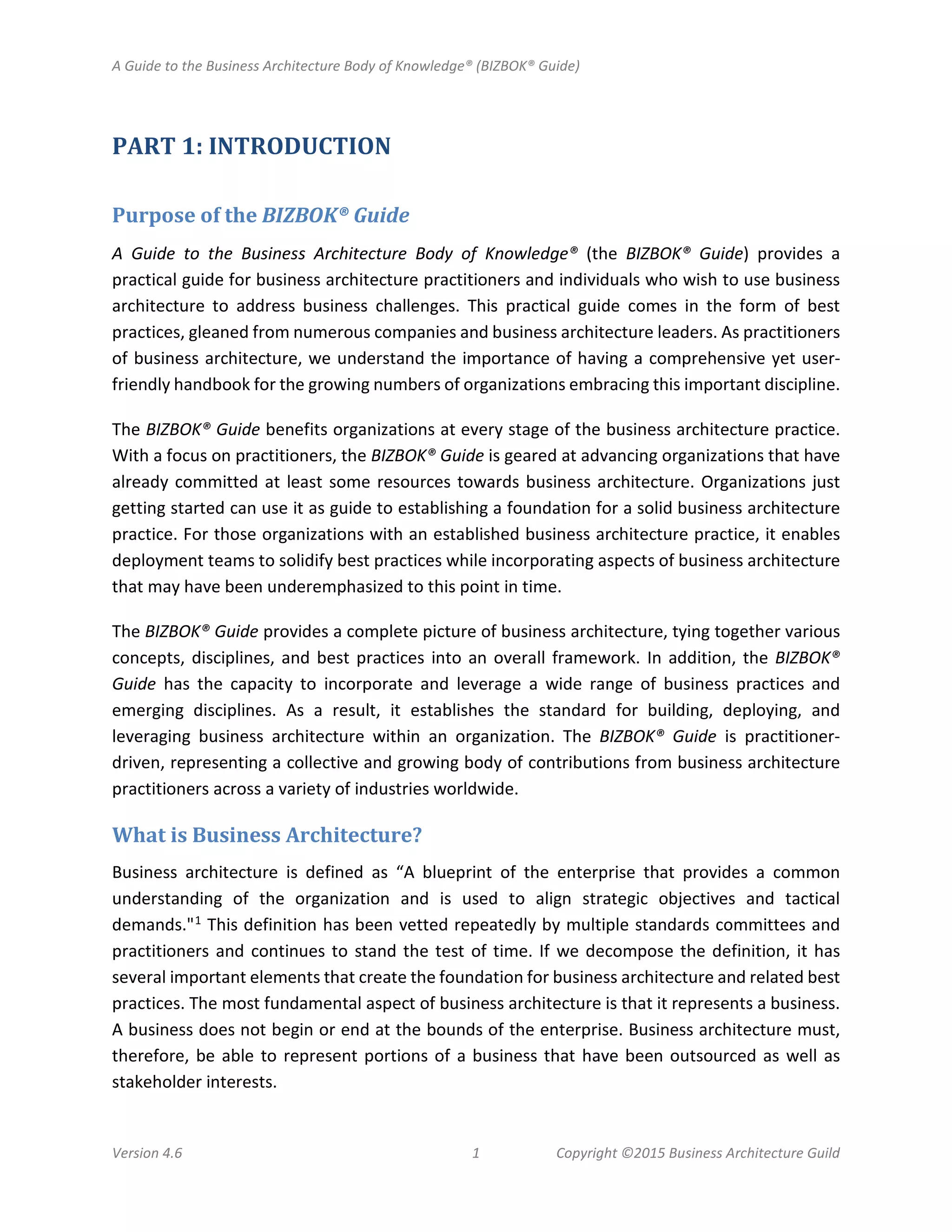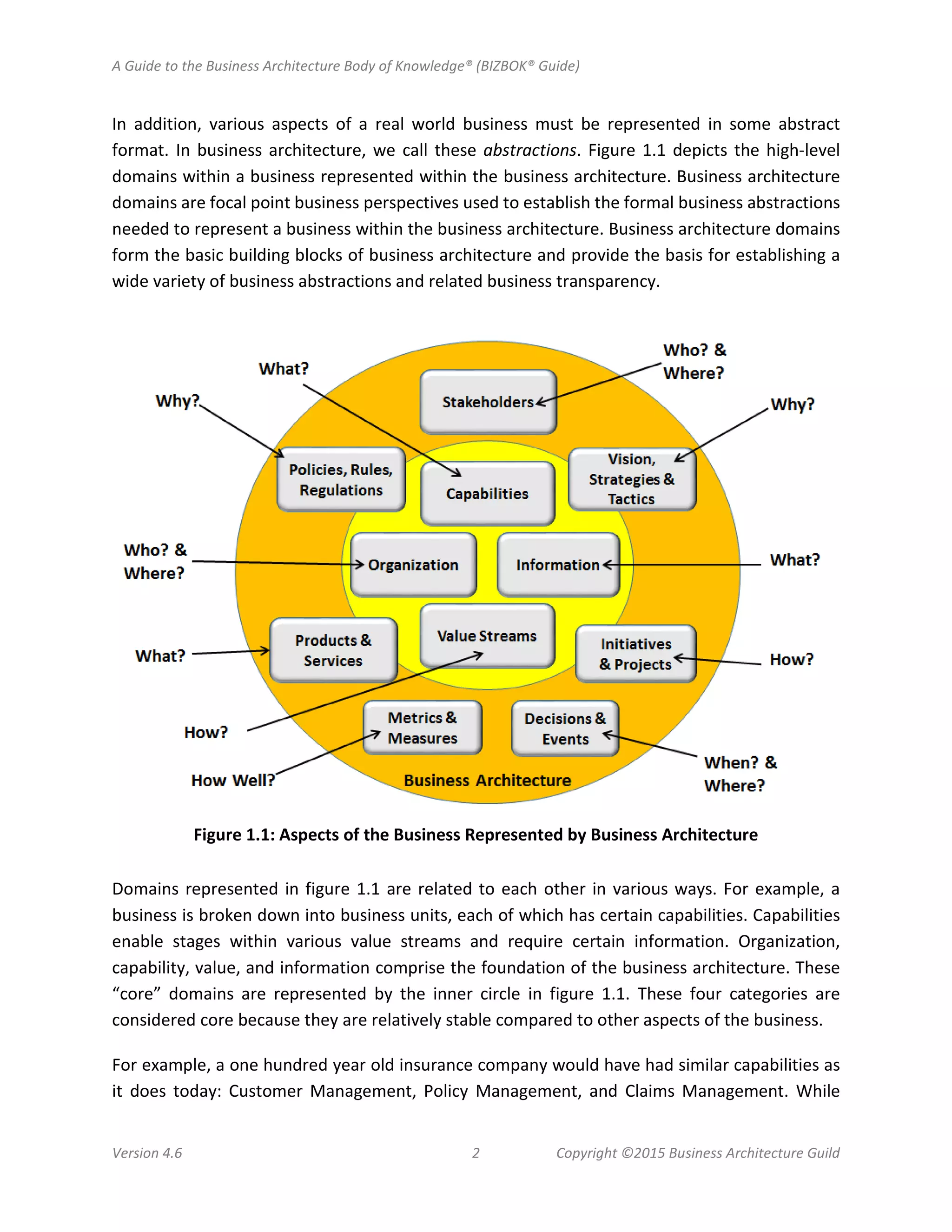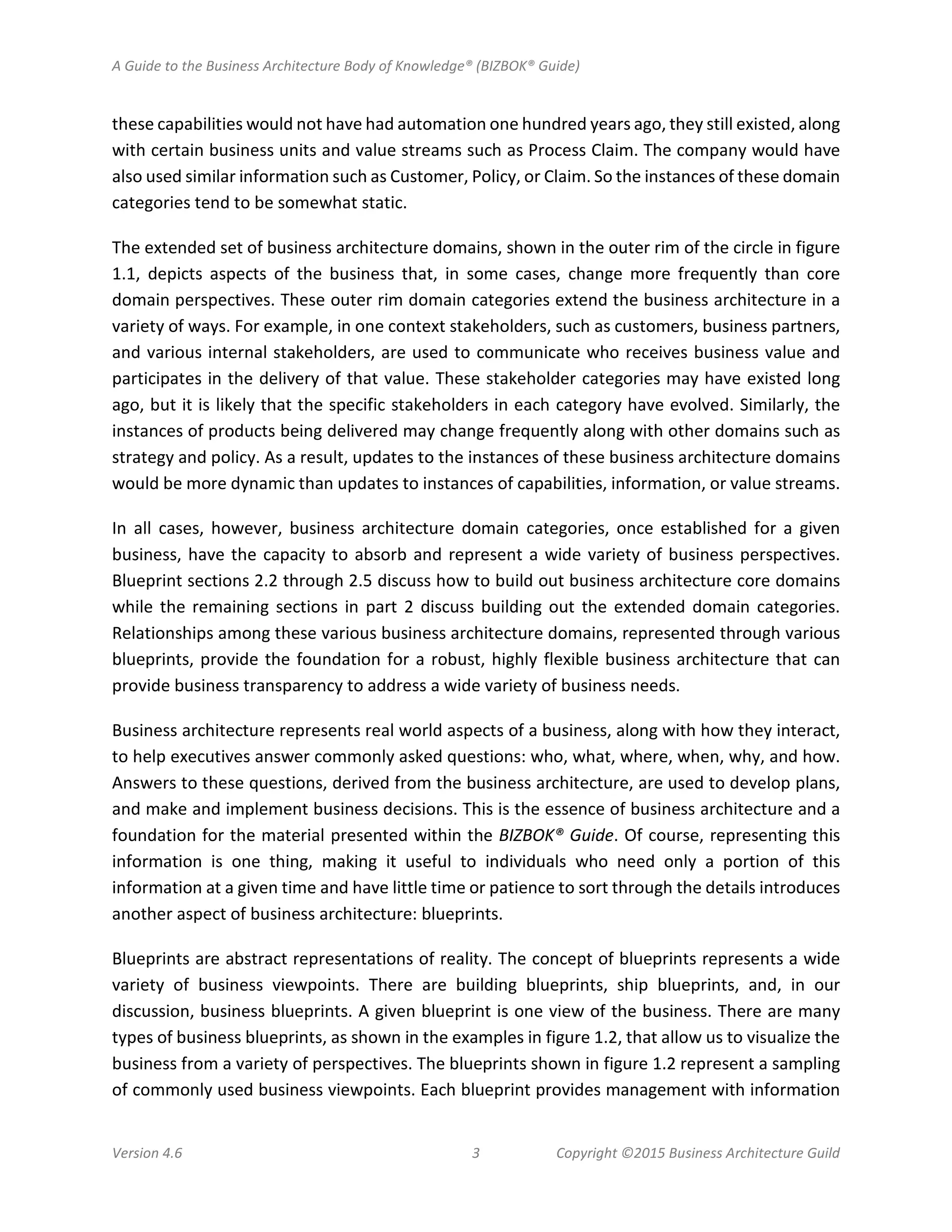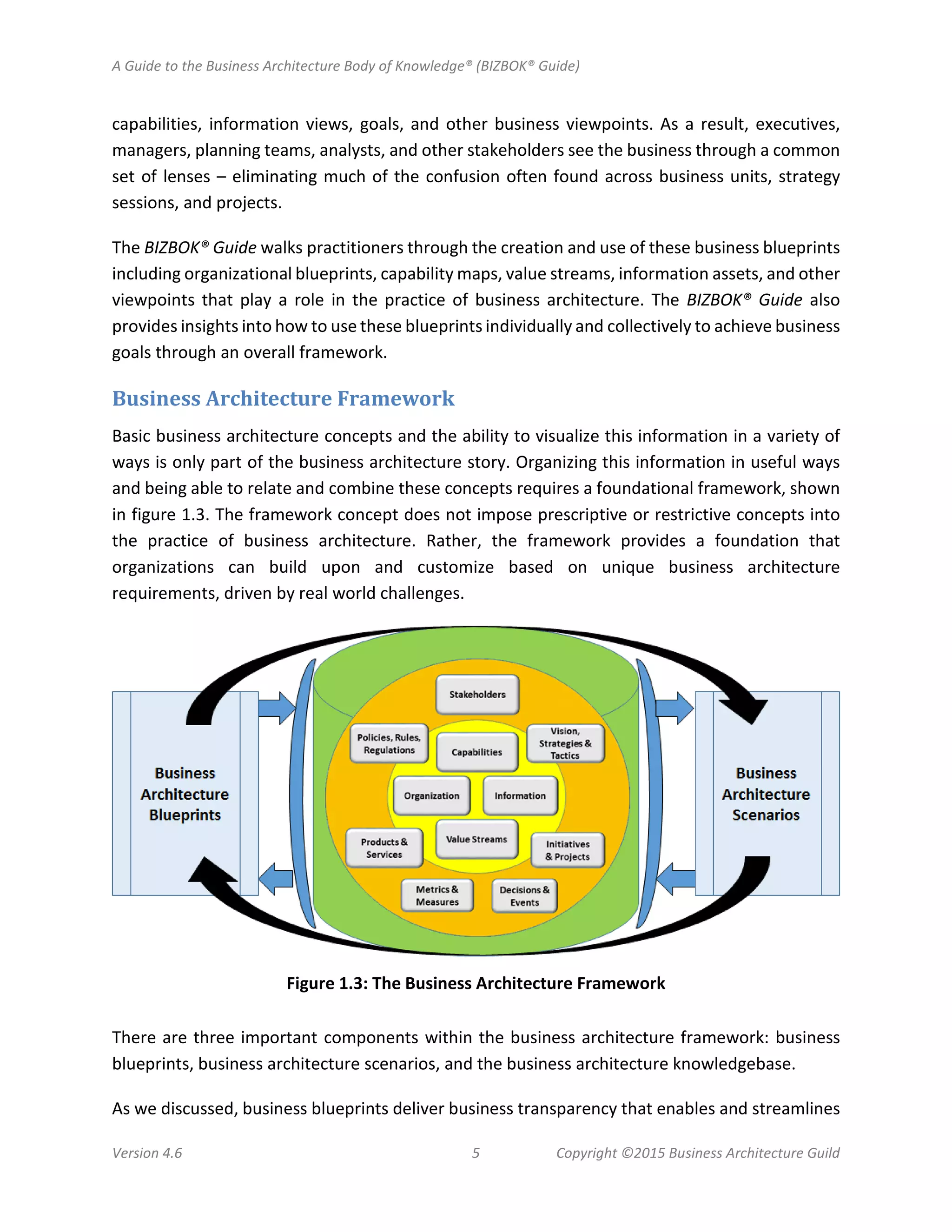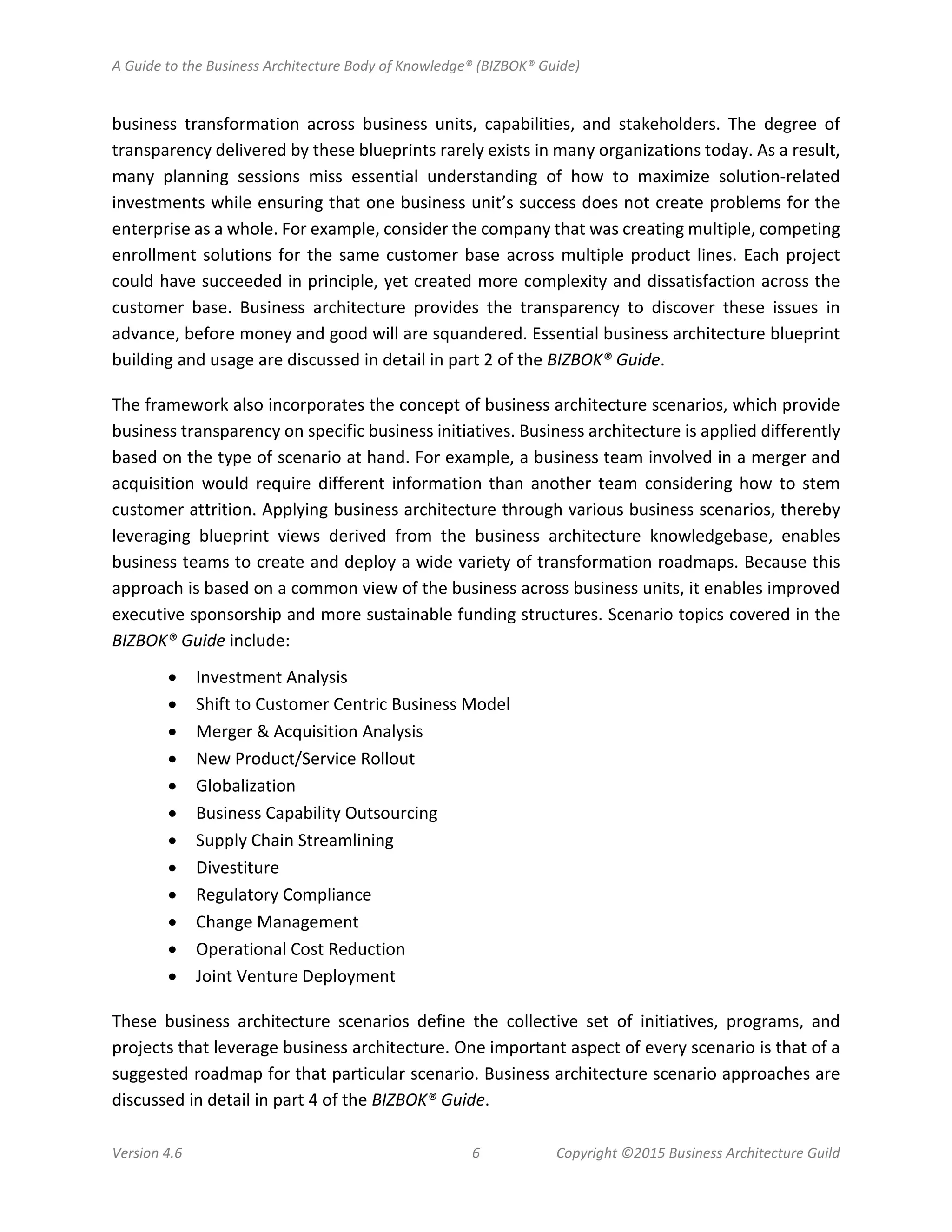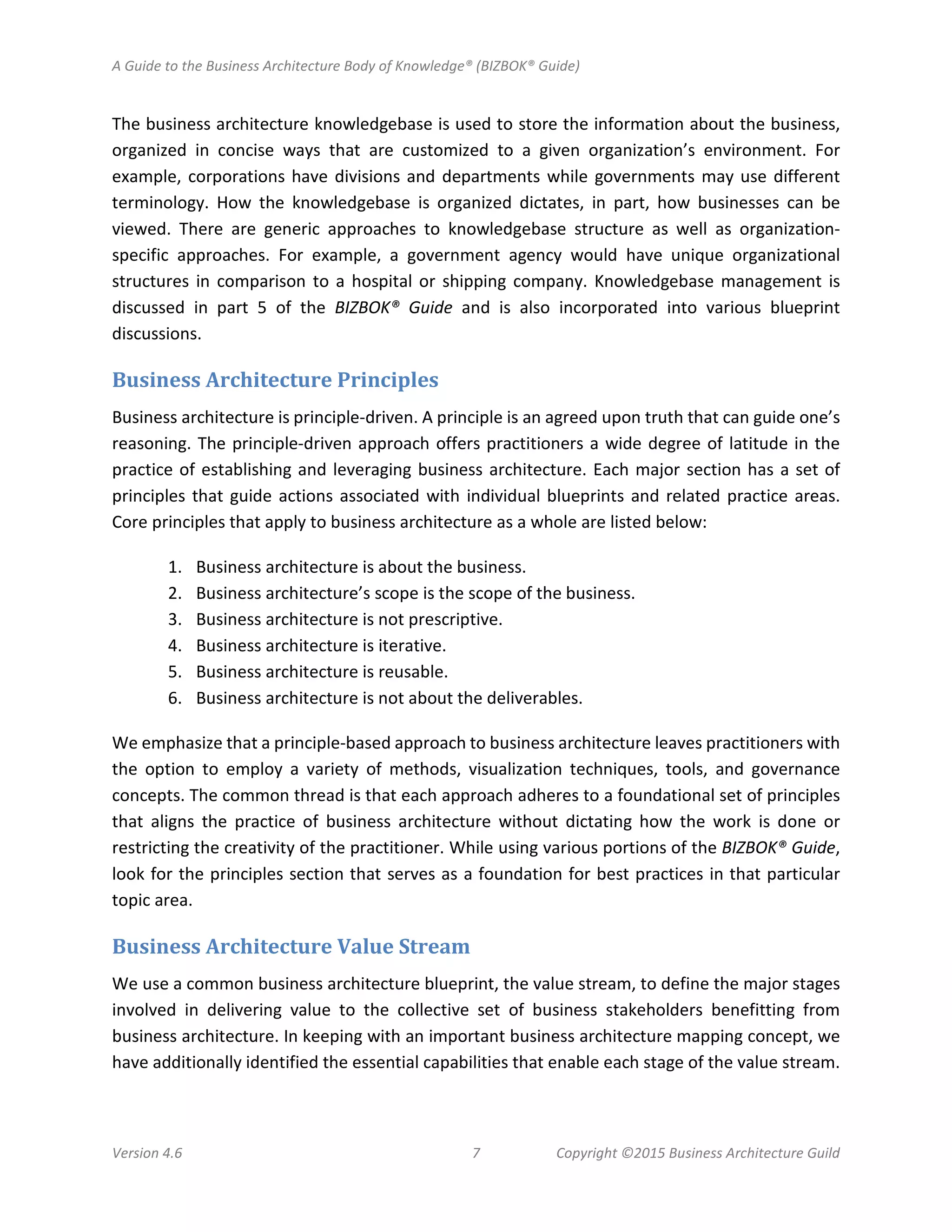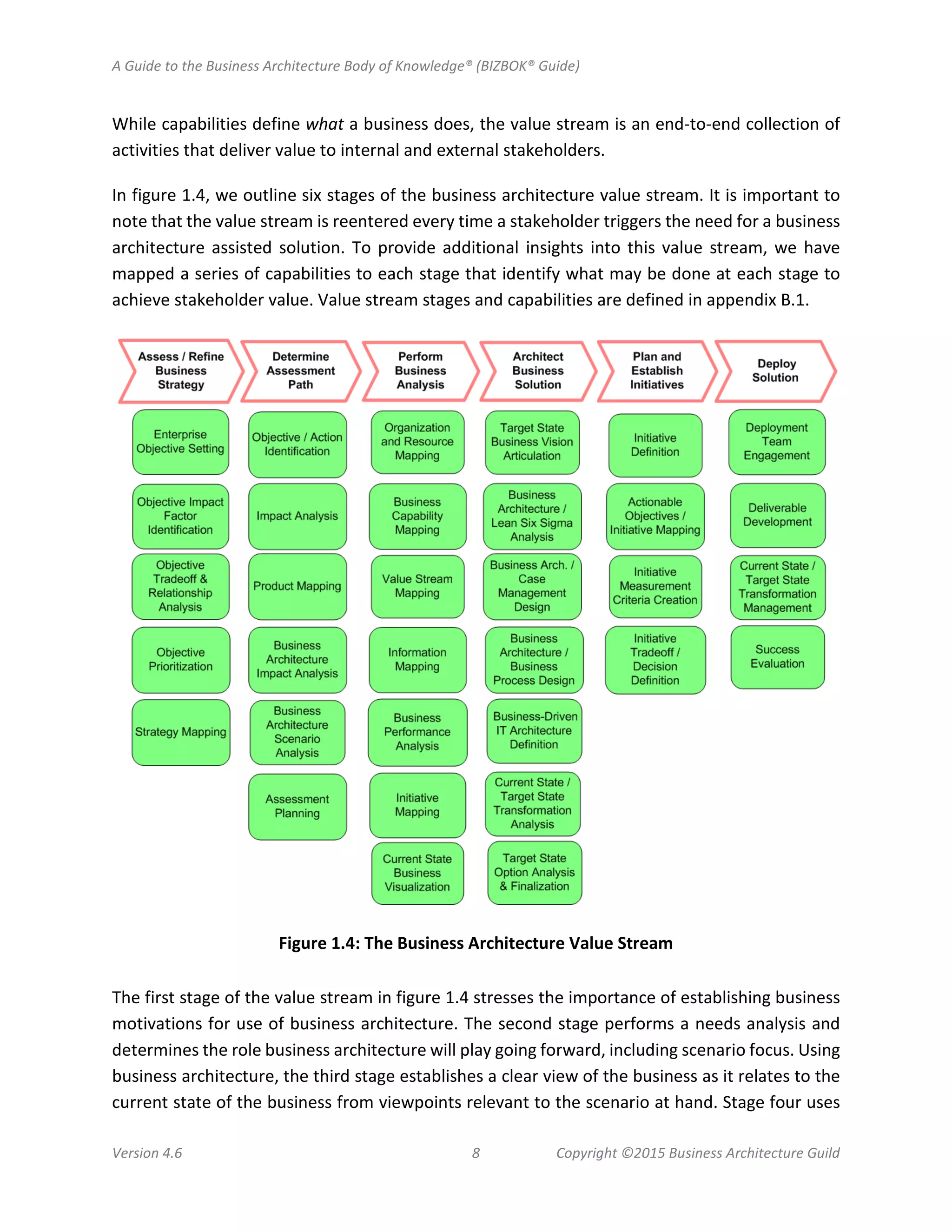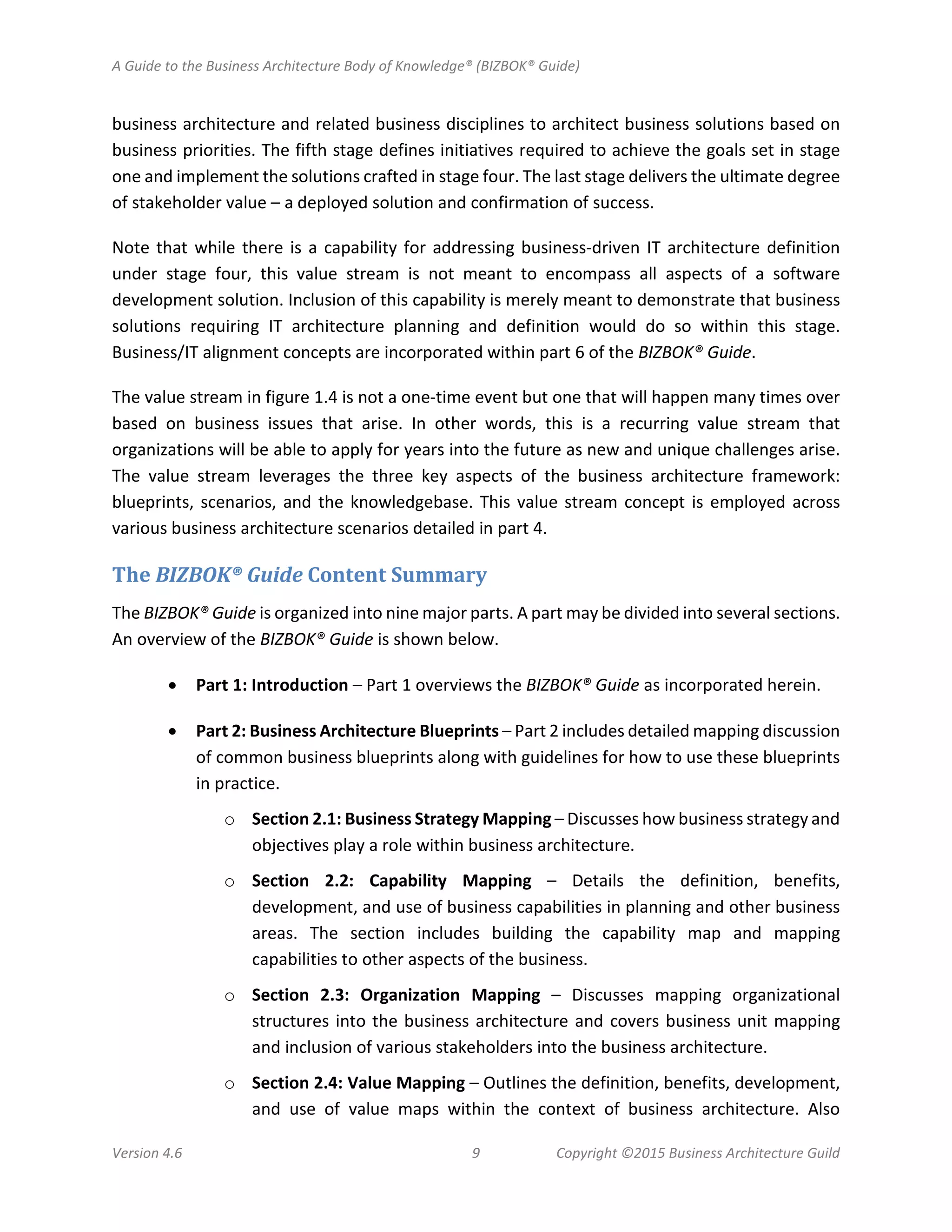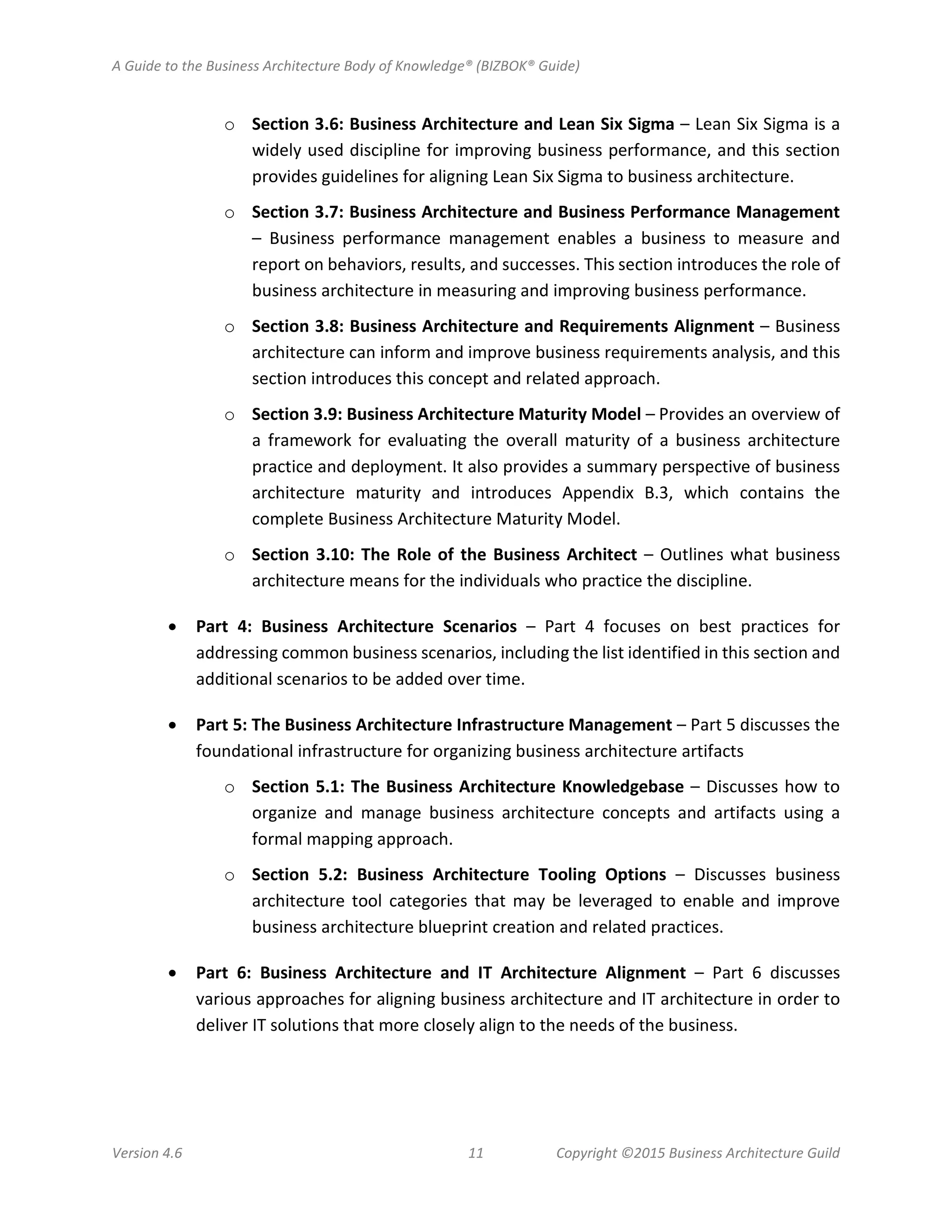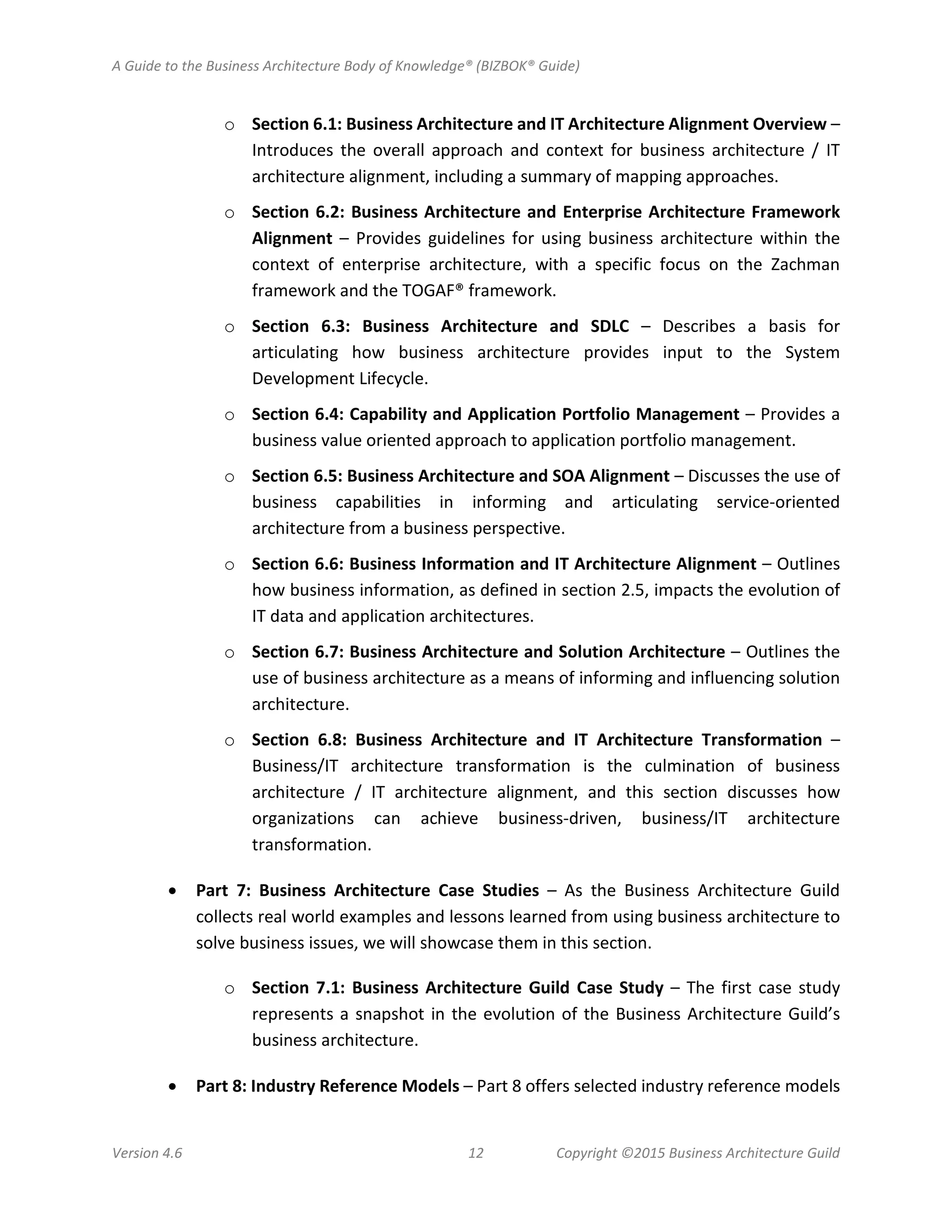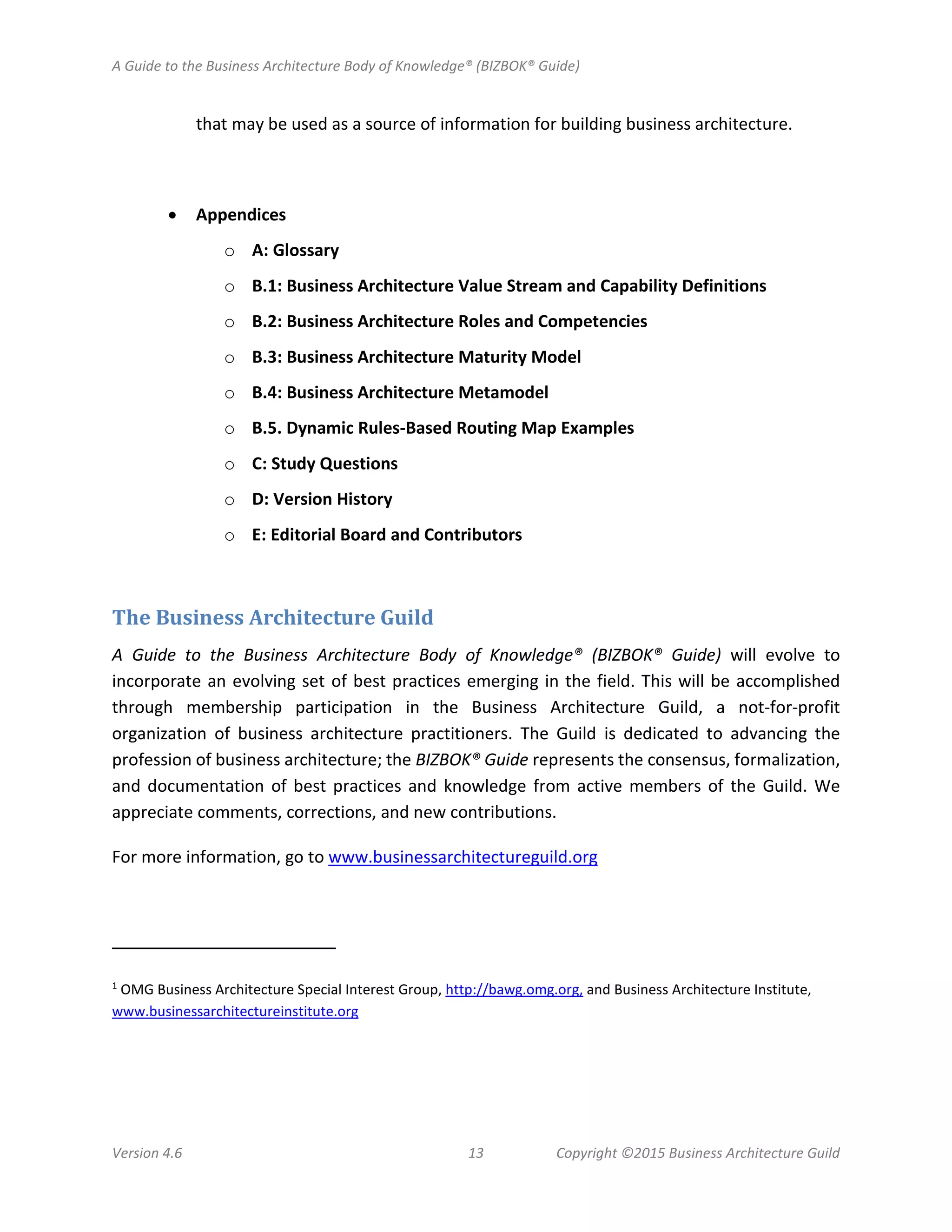The document is an introduction to the BIZBOK® Guide, which provides a framework and best practices for business architecture. It defines business architecture as a blueprint that provides a common understanding of an organization used to align strategic objectives and tactical demands. The guide represents various business concepts, disciplines, and best practices in an overall framework. It establishes standards for building, deploying, and leveraging business architecture. Business architecture represents real-world aspects of a business and how they interact to help executives answer questions about the business. Blueprints are abstract representations of the business that allow different viewpoints to be visualized.
